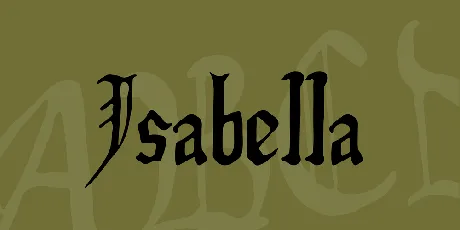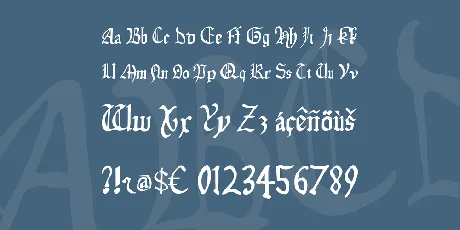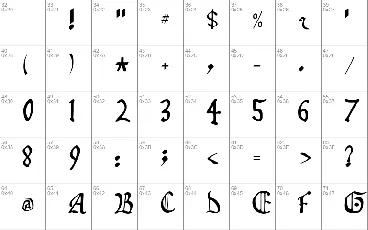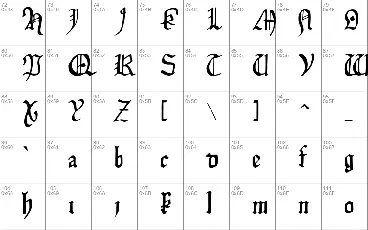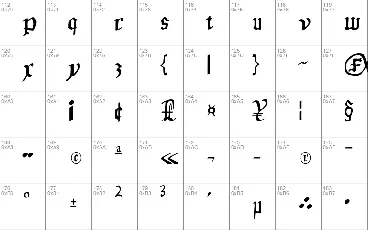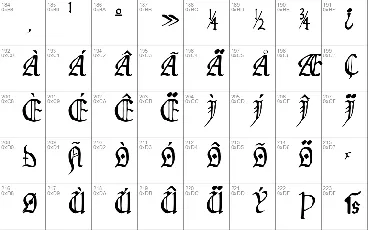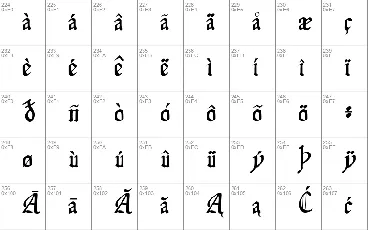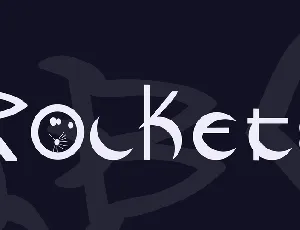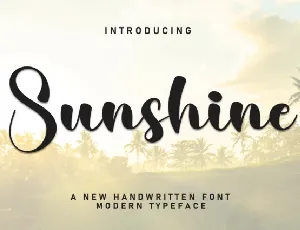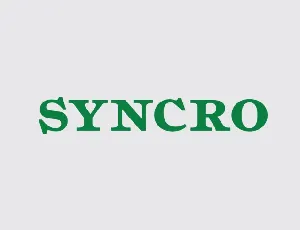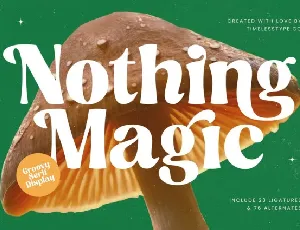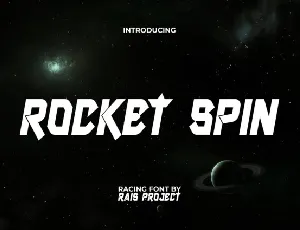Download free Isabella font - John Stracke
About Isabella font
Isabella, a font by John Stracke, www.thibault.org/fonts/ .
This font is called Isabella because it is based on the calligraphic hand used in the Isabella Breviary, made around 1497, in Holland, for Isabella of Castille, the first queen of united Spain.
It is released under the terms of the GNU General Public License (GPL). You should have received a copy of the GPL along with this program; it's in a file called COPYING. If not, write to the Free Software Foundation, Inc., 59 Temple Place, Suite 330, Boston, MA 02111-1307 USA, or see www.fsf.org/licenses/gpl.txt .
Where the GPL refers to "source code", I take that to refer to the file called Isabella-first.sfd, which is a file for editing with pfaedit (see pfaedit.sourceforge.net), an outline font editor program. Pfaedit is not GPLed, but its license does seem to count as free software (it's BSD-style, without the advertising clause). Thus, according to the GPL, if you distribute this font, you must make Isabella-first.sfd available to the recipient(s) under the terms the GPL specifies for source availability.
At the time of this writing, Isabella-first.sfd is available on my
Website at www.thibault.org/fonts/isabella/ .
The font is, I think, complete for Latin-1 and Latin-2 (and maybe others); it covers the first 384 characters of Unicode, not counting control characters. It also has some other characters (e.g., the quotation symbols used in Spanish), for a total of 342. If you find that some character from your language is not quite right, please be kind; the only languages I've known are Latin, English, Spanish, and German, which means that most of the letters outside ASCII are new to me. (Spanish uses tilde and acute accents on vowels; German uses ess-zed. I had never heard of, say, ogonek, or accents on consonants, before doing this font.) It has a Euro symbol.
Naturally, the Isabella Breviary does not have an example of, say, @, so I drew such characters as best I could. The primary design goal on such characters was to look like something done with a calligraphic pen; the secondary goal was to look like the other characters of the font. So, for example, the copyright character ("c" in a circle) is made by shrinking down the letter "c" and placing it inside a circle.
The original hand, like many medieval hands, has a half-r character, used in ligatures for "or", "pr", "br", and "dr". I have not yet figured out how to get pfaedit to produce ligatures; for now, the "or" character is in the character position for Greek lowercase omega.
The alphabet wasn't quite the same in 1497. There were no "j" or "w"; I have added them. Unusually, the original hand *does* have a "v"; many medieval writers used "u" instead. In addition, there was a "long s", which was used in the middle of words (for which reason it is also called the "medial s", and the modern "s", used at the end of words, is called the "terminal s"); I have provided one. The German ess-zed (looks sort of like a Greek beta, but isn't) originated as a ligature of the long "s" followed by the short "s", so, in this font, I have represented ess-zed as the two "s"es together.
Bugs
Microsoft Word 2000 has trouble with the long "s"; it introduces a line break before and after the "s".
The ampersand is perhaps too authentic; it's not really recognizable to a modern eye. Feedback is welcomed: www.thibault.org/mail/ .
Created by John Stracke with FontForge (formerly PfaEdit, fontforge.sourceforge.net). May be used under either the SIL Open Font License or the LGPL. For the purposes of the OFL, the only Reserved Font Name is "Isabella". www.thibault.org/fonts/isabella/
Download font
Free for Personal Use
This fonts are authors' property, and are either shareware, demo versions or public domain. The licence mentioned above the download button is just an indication. Please look at the readme-files in the archives or check the indicated author's website for details, and contact him if in doubt. If no author/licence is indicated that's because we don't have information, that doesn't mean it's free.
Isabella Medium | Isabella.otf
- Font family: Isabella
- Font subfamily identification: Medium
- Unique identifier: John Stracke : Isabella : 9-11-2011
- Full font name: Isabella
- Version: Version 001.202
- Postscript font name: Isabella
- Designer: John Stracke
- License: May be used under either the SIL Open Font License or the LGPL. For the purposes of the OFL, the only Reserved Font Name is "Isabella".
Isabella Medium | Isabella.ttf
- Font family: Isabella
- Font subfamily identification: Medium
- Unique identifier: John Stracke : Isabella : 9-11-2011
- Full font name: Isabella
- Version: Version 001.202
- Postscript font name: Isabella
- Designer: John Stracke
- License: May be used under either the SIL Open Font License or the LGPL. For the purposes of the OFL, the only Reserved Font Name is "Isabella".
OFL
Copyright (c)
with Reserved Font Name
Copyright (c)
with Reserved Font Name
Copyright (c)
This Font Software is licensed under the SIL Open Font License, Version 1.1.
This license is copied below, and is also available with a FAQ at:
http://scripts.sil.org/OFL
-----------------------------------------------------------
SIL OPEN FONT LICENSE Version 1.1 - 26 February 2007
-----------------------------------------------------------
PREAMBLE
The goals of the Open Font License (OFL) are to stimulate worldwide
development of collaborative font projects, to support the font creation
efforts of academic and linguistic communities, and to provide a free and
open framework in which fonts may be shared and improved in partnership
with others.
The OFL allows the licensed fonts to be used, studied, modified and
redistributed freely as long as they are not sold by themselves. The
fonts, including any derivative works, can be bundled, embedded,
redistributed and/or sold with any software provided that any reserved
names are not used by derivative works. The fonts and derivatives,
however, cannot be released under any other type of license. The
requirement for fonts to remain under this license does not apply
to any document created using the fonts or their derivatives.
DEFINITIONS
"Font Software" refers to the set of files released by the Copyright
Holder(s) under this license and clearly marked as such. This may
include source files, build scripts and documentation.
"Reserved Font Name" refers to any names specified as such after the
copyright statement(s).
"Original Version" refers to the collection of Font Software components as
distributed by the Copyright Holder(s).
"Modified Version" refers to any derivative made by adding to, deleting,
or substituting -- in part or in whole -- any of the components of the
Original Version, by changing formats or by porting the Font Software to a
new environment.
"Author" refers to any designer, engineer, programmer, technical
writer or other person who contributed to the Font Software.
PERMISSION & CONDITIONS
Permission is hereby granted, free of charge, to any person obtaining
a copy of the Font Software, to use, study, copy, merge, embed, modify,
redistribute, and sell modified and unmodified copies of the Font
Software, subject to the following conditions:
1) Neither the Font Software nor any of its individual components,
in Original or Modified Versions, may be sold by itself.
2) Original or Modified Versions of the Font Software may be bundled,
redistributed and/or sold with any software, provided that each copy
contains the above copyright notice and this license. These can be
included either as stand-alone text files, human-readable headers or
in the appropriate machine-readable metadata fields within text or
binary files as long as those fields can be easily viewed by the user.
3) No Modified Version of the Font Software may use the Reserved Font
Name(s) unless explicit written permission is granted by the corresponding
Copyright Holder. This restriction only applies to the primary font name as
presented to the users.
4) The name(s) of the Copyright Holder(s) or the Author(s) of the Font
Software shall not be used to promote, endorse or advertise any
Modified Version, except to acknowledge the contribution(s) of the
Copyright Holder(s) and the Author(s) or with their explicit written
permission.
5) The Font Software, modified or unmodified, in part or in whole,
must be distributed entirely under this license, and must not be
distributed under any other license. The requirement for fonts to
remain under this license does not apply to any document created
using the Font Software.
TERMINATION
This license becomes null and void if any of the above conditions are
not met.
DISCLAIMER
THE FONT SOFTWARE IS PROVIDED "AS IS", WITHOUT WARRANTY OF ANY KIND,
EXPRESS OR IMPLIED, INCLUDING BUT NOT LIMITED TO ANY WARRANTIES OF
MERCHANTABILITY, FITNESS FOR A PARTICULAR PURPOSE AND NONINFRINGEMENT
OF COPYRIGHT, PATENT, TRADEMARK, OR OTHER RIGHT. IN NO EVENT SHALL THE
COPYRIGHT HOLDER BE LIABLE FOR ANY CLAIM, DAMAGES OR OTHER LIABILITY,
INCLUDING ANY GENERAL, SPECIAL, INDIRECT, INCIDENTAL, OR CONSEQUENTIAL
DAMAGES, WHETHER IN AN ACTION OF CONTRACT, TORT OR OTHERWISE, ARISING
FROM, OUT OF THE USE OR INABILITY TO USE THE FONT SOFTWARE OR FROM
OTHER DEALINGS IN THE FONT SOFTWARE.
README
Isabella, a font by John Stracke,
This font is called Isabella because it is based on the calligraphic
hand used in the Isabella Breviary, made around 1497, in Holland, for
Isabella of Castille, the first queen of united Spain.
It is released under the terms of the GNU General Public License
(GPL). You should have received a copy of the GPL along with this
program; it's in a file called COPYING. If not, write to the Free
Software Foundation, Inc., 59 Temple Place, Suite 330, Boston, MA
02111-1307 USA, or see
Where the GPL refers to "source code", I take that to refer to the
file called Isabella-first.sfd, which is a file for editing with
pfaedit (see
program. Pfaedit is not GPLed, but its license does seem to count as
free software (it's BSD-style, without the advertising clause). Thus,
according to the GPL, if you distribute this font, you must make
Isabella-first.sfd available to the recipient(s) under the terms
the GPL specifies for source availability.
At the time of this writing, Isabella-first.sfd is available on my
Website at
The font is, I think, complete for Latin-1 and Latin-2 (and maybe
others); it covers the first 384 characters of Unicode, not counting
control characters. It also has some other characters (e.g., the
quotation symbols used in Spanish), for a total of 342. If you find
that some character from your language is not quite right, please be
kind; the only languages I've known are Latin, English, Spanish, and
German, which means that most of the letters outside ASCII are new to
me. (Spanish uses tilde and acute accents on vowels; German uses
ess-zed. I had never heard of, say, ogonek, or accents on consonants,
before doing this font.) It has a Euro symbol.
Naturally, the Isabella Breviary does not have an example of, say, @,
so I drew such characters as best I could. The primary design goal on
such characters was to look like something done with a calligraphic
pen; the secondary goal was to look like the other characters of the
font. So, for example, the copyright character ("c" in a circle) is
made by shrinking down the letter "c" and placing it inside a circle.
The original hand, like many medieval hands, has a half-r character,
used in ligatures for "or", "pr", "br", and "dr". I have not yet
figured out how to get pfaedit to produce ligatures; for now, the "or"
character is in the character position for Greek lowercase omega.
The alphabet wasn't quite the same in 1497. There were no "j" or "w";
I have added them. Unusually, the original hand *does* have a "v";
many medieval writers used "u" instead. In addition, there was a
"long s", which was used in the middle of words (for which reason it
is also called the "medial s", and the modern "s", used at the end of
words, is called the "terminal s"); I have provided one. The German
ess-zed (looks sort of like a Greek beta, but isn't) originated as a
ligature of the long "s" followed by the short "s", so, in this font,
I have represented ess-zed as the two "s"es together.
Bugs
Microsoft Word 2000 has trouble with the long "s"; it introduces a
line break before and after the "s".
The ampersand is perhaps too authentic; it's not really recognizable
to a modern eye. Feedback is welcomed:

